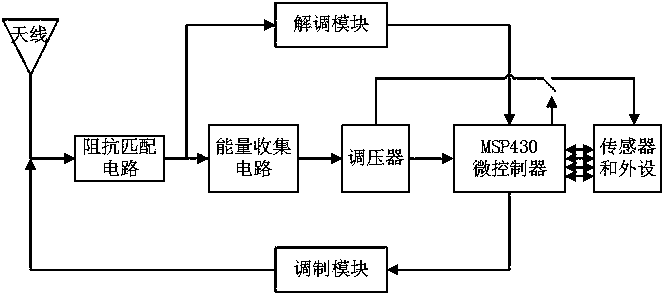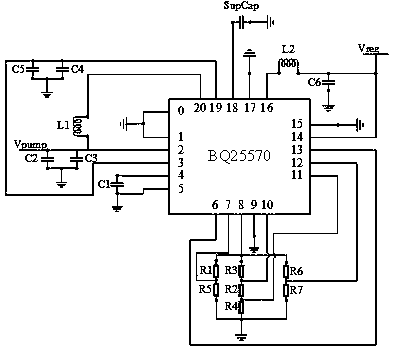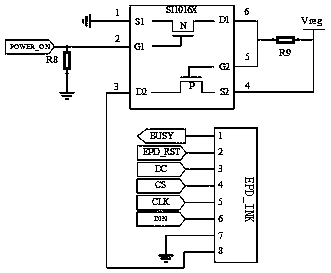Low power consumption display node based on wireless identification sensing platform WISP
A wireless identification and display node technology, which is applied in wireless communication, power management, energy consumption reduction, etc., can solve the problems of intuition and convenience, increased hardware cost, troublesome display methods, etc., to achieve low cost, improve utilization efficiency, and high efficiency Effects of Energy Management Strategies
- Summary
- Abstract
- Description
- Claims
- Application Information
AI Technical Summary
Problems solved by technology
Method used
Image
Examples
Embodiment Construction
[0024] The present invention will be further described below in conjunction with drawings and embodiments.
[0025] This embodiment provides a technology for displaying data on an ink screen in the field of low power consumption energy capture and radio frequency reflection communication. The technical solution provided by this embodiment is as follows, including "circuit design" and "energy saving strategy".
[0026] Circuit Design: Although this embodiment is developed on the basis of the WISP platform, considerable improvements have been made to the WISP platform itself. In energy harvesting and power management circuits, such as figure 2 , this circuit is composed of BQ25570 energy harvesting chip U1, supercapacitor SupCap, inductors L1, L2, resistors R1, R2, R3, R4, R5, R6, R7, capacitors C1, C2, C3, C4, C5, C6. Pins 0, 1, 5, 9, 15, and 17 of U1 are connected to GND. One end of the capacitor C1 is connected to the fourth pin of U1, and the other end is connected to GN...
PUM
 Login to View More
Login to View More Abstract
Description
Claims
Application Information
 Login to View More
Login to View More - R&D Engineer
- R&D Manager
- IP Professional
- Industry Leading Data Capabilities
- Powerful AI technology
- Patent DNA Extraction
Browse by: Latest US Patents, China's latest patents, Technical Efficacy Thesaurus, Application Domain, Technology Topic, Popular Technical Reports.
© 2024 PatSnap. All rights reserved.Legal|Privacy policy|Modern Slavery Act Transparency Statement|Sitemap|About US| Contact US: help@patsnap.com










